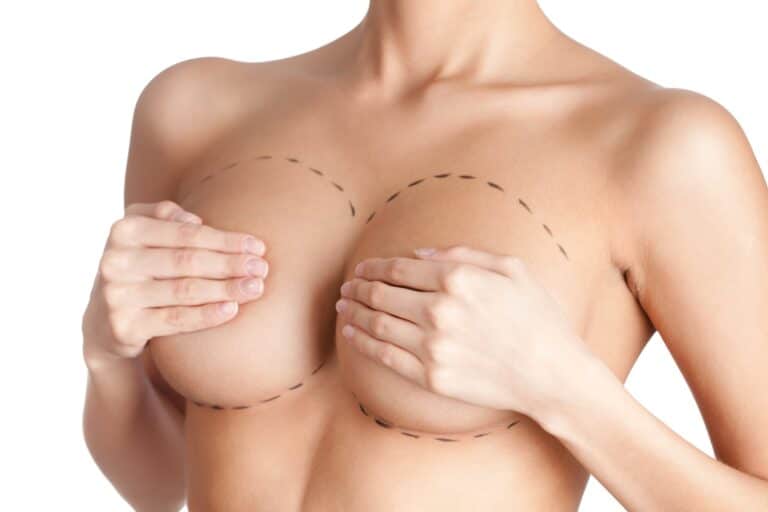Lip Fillers Types: Benefits and Risks Explained
Understanding Lip Fillers
What Are Lip Fillers?
Lip fillers are substances injected into the lips. They enhance the shape, volume, and structure of the lips with dermal filler injections and fat injections. Different lip fillers provide various results.
HA lip fillers, like Juvederm, are popular. They consist of hyaluronic acid, a substance naturally found in the body, used in various lip filler options like juvederm lip injections and lip filler treatments. This makes them safe and effective.
FDA Approval
The FDA approves most lip fillers. This ensures they are safe for use. The minimum age for getting lip fillers is 21. This regulation protects younger individuals from potential risks.
Types of Lip Fillers
There are several types of lip fillers:
- Juvederm lip fillers: These are hyaluronic acid-based and offer natural-looking results.
- Collagen lip fillers: These were more common in the past but have been largely replaced by HA fillers, resulting in smoother hair.
- Permanent silicone lip fillers: These provide long-lasting results but come with higher risks.
- Fat transfer lip injections: This method uses fat from another part of your body for a natural result.
Each type has its pros and cons. Consult with a healthcare provider to choose the ideal lip filler for your needs.
Role of Healthcare Providers
Healthcare providers play a crucial role in the lip filler procedure. They evaluate your mental, social, and physical health before proceeding with the lip filler procedure. This ensures you are a good candidate for the lip filler treatment.
Providers also discuss your goals and expectations. They help you understand what to expect during and after the lip filler procedure.
The Procedure
The lip filler injection process is straightforward. It usually takes about 30 minutes. A numbing cream is applied first to minimize discomfort.
After the injection, you might experience swelling or bruising. These side effects typically subside within a few days.
Post-Treatment Care
After your lip filler appointment, follow your provider’s care instructions. Avoid strenuous activities for at least 24 hours. Stay hydrated and avoid excessive sun exposure.
Pre-Filler Steps
Assessment
A thorough assessment by a healthcare provider is crucial. They will ask about the patient’s expectations. Understanding why someone wants lip fillers helps to set realistic goals.
Patients should be honest about their reasons. This can prevent disappointment later. Healthcare providers need to know if the patient is influenced by others. Peer pressure or trends can affect decisions. Discussing this openly ensures the decision about lip filler is personal and well-considered.
Evaluation Process
The pre-procedure evaluation includes several steps. Checking for allergies is vital. Some patients may react to filler ingredients. Knowing this in advance prevents complications.
Preexisting conditions must be disclosed. Conditions like diabetes or autoimmune diseases can affect healing. The provider needs to know all medical history details.
Current medications are also important. Certain drugs can increase bleeding risks. Blood thinners, for example, need careful management before the lip filler procedure.
Influences
Discussing potential influences from others is important. Patients might feel pressured by friends or social media trends to get lip filler. This can lead to unrealistic expectations.
Providers should ask if others have influenced the decision. Knowing this helps tailor the consultation. It ensures that the patient’s choice is independent and informed.
Filler Types Overview
Hyaluronic Acid
Hyaluronic acid fillers are popular. They are made from a substance naturally found in the body, like lip filler. These fillers add volume and shape to the lips. The results of lip filler are temporary, usually lasting six to twelve months.
Collagen
Collagen fillers were once common. They come from animal or human sources. These fillers provide a natural look but can cause allergic reactions. Their effects last about three to four months.
Poly-L-Lactic Acid
Poly-L-lactic acid fillers stimulate collagen production. They offer gradual results over several months. These fillers are longer-lasting, often up to two years. They require multiple treatments for full effect.
Calcium Hydroxylapatite
Calcium hydroxylapatite is a mineral-like compound. It is found in bones and used in thicker fillers. These fillers are best for adding significant volume. Results can last up to eighteen months.
Areas of Injection
Fillers can be injected into specific parts of the lips. The vermillion border defines the edge of the lips. Injecting here enhances lip outline and shape.
The Cupid’s bow is the center curve of the upper lip. Fillers here create a more defined and attractive look.
Choosing the Right Filler
Selecting the right filler depends on individual needs. Some people want subtle enhancements, while others seek dramatic changes.
Consulting with a professional is crucial. They assess lip structure and desired outcomes. This helps in choosing the most suitable filler type.
Hyaluronic Acid Benefits
Natural Compatibility
Hyaluronic acid fillers offer natural compatibility with the body. They are made from a substance found in human tissues. This reduces the risk of allergic reactions. The body accepts these fillers more easily than synthetic options.
Another benefit is their reversibility. If the results are unsatisfactory, an enzyme called hyaluronidase can dissolve the filler. This makes adjustments simple and stress-free.
Enhanced Lip Volume
Hyaluronic acid fillers improve lip volume effectively. They add fullness to thin lips, creating a plumper appearance. The results look natural and enhance overall facial harmony.
These fillers also help define the lip shape. They can correct asymmetry and refine lip contours. This leads to a more balanced and aesthetically pleasing look.
Improved Structure
The structure of the lips benefits significantly from hyaluronic acid fillers. They provide support to the lips, making them firmer and smoother. This helps reduce fine lines around the mouth.
The fillers also improve hydration. Hyaluronic acid attracts water, keeping the lips moist and supple. This enhances both appearance and comfort.
Safety Profile
Hyaluronic acid fillers have a strong safety profile. They are well-tolerated by most people and pose minimal risks. Common side effects include swelling, redness, and bruising at the injection site. These effects are temporary and usually resolve within a few days.
Compared to other types of fillers, hyaluronic acid is safer. It has fewer complications and adverse reactions. This makes it a preferred choice for many seeking lip enhancement.
Temporary Effects
One advantage of hyaluronic acid fillers is their temporary nature. The effects last between six months to a year. This allows individuals to decide if they want to continue with treatments or let the filler naturally dissolve.
Temporary effects also mean less commitment. If someone dislikes the outcome, they can wait for it to fade without long-term consequences.
Other Filler Options
Collagen Fillers
Collagen fillers were popular before hyaluronic acid fillers. They are derived from bovine or human sources. These fillers provide a natural look and feel.
However, collagen fillers last only three to four months. Some people might be allergic to them. A skin test is needed before use.
Fat Transfer
Fat transfer involves using one’s own fat for lip augmentation. The fat is taken from another part of the body, usually the abdomen or thighs. This process is also known as lipofilling.
The results can last several years. However, the procedure is more complex. It requires two steps: fat harvesting and injection. Recovery time can be longer compared to other fillers.
Longevity Comparison
Hyaluronic acid fillers typically last six to twelve months. Collagen fillers last about three to four months. Fat transfer can last several years.
Each filler has different longevity. Hyaluronic acid is temporary but reversible. Collagen is short-term and may require frequent touch-ups. Fat transfer offers long-lasting results but involves a more invasive procedure.
Aesthetic Outcomes
Hyaluronic acid fillers provide immediate volume and smoothness. Collagen fillers offer a natural texture but less volume. Fat transfer gives a permanent solution with a natural feel.
Each option affects the lips differently. Hyaluronic acid provides plumpness quickly. Collagen offers subtle enhancement. Fat transfer delivers lasting volume with minimal maintenance.

Suitability for Patients
Different fillers suit different needs and preferences. Hyaluronic acid fillers are best for those seeking temporary enhancement with low risk. Collagen fillers suit people wanting a natural look without much volume.
Fat transfer is ideal for those desiring long-term results and willing to undergo surgery. Each patient should discuss options with their provider to choose the best fit.
Side Effects and Risks
Common Side Effects
Lip fillers often cause temporary side effects. Swelling is the most common. It usually peaks within 24 to 48 hours after the injection. Most swelling subsides within a few days, but it can last up to two weeks.
Bruising is another frequent side effect. It occurs when the needle punctures a blood vessel. Bruises typically fade within one to two weeks. Pain or tenderness at the injection site is also common. This discomfort usually resolves within a few days.
Sensitivity and Reactions
e people experience increased sensitivity in their lips after getting fillers. This can include tingling or numbness. These sensations are generally mild and temporary.
Rarely, individuals may have an allergic reaction to the filler material. Symptoms can include itching, redness, and swelling beyond the injection site. If these symptoms occur, contact a healthcare provider immediately.
Serious Risks
Though uncommon, serious risks do exist. One such risk is vascular complications. If filler accidentally enters a blood vessel, it can block blood flow. This can lead to tissue death or even blindness if not treated promptly.
Infections are another rare but serious risk. Signs of infection include severe pain, warmth at the injection site, and fever. Immediate medical attention is necessary if these symptoms appear.
Factors Influencing Risks
Several factors can influence the side effects and risks of lip fillers. Age plays a role; older individuals may experience longer healing times. The type of filler used also matters. Some fillers are more prone to causing reactions than others.
The skill of the injector is crucial as well. Experienced professionals are less likely to cause complications. Always choose a certified and experienced practitioner for your procedure.
When to Seek Help
It’s important to know when to seek medical attention after getting lip fillers:
- Severe pain that doesn’t improve with time.
- Prolonged or worsening swelling beyond two weeks.
- Signs of infection like fever or pus.
- Unusual discoloration indicating possible vascular issues.
Post-Filler Care
Minimizing Discomfort
After getting lip fillers, some discomfort is normal. Apply ice packs to the lips for 10-15 minutes every few hours. This helps reduce swelling and numbs the area. Avoid strenuous activities for at least 24 hours. Exercise can increase blood flow, causing more swelling.
Lip Care Practices
Hydration is key post-procedure. Drink plenty of water to keep your lips moist from the inside out. Avoid using any lip products for the first 24 hours. This includes lipstick, lip balm, and gloss. These can irritate the injection sites.
Following Instructions
It is crucial to follow your healthcare provider’s specific aftercare instructions. These guidelines are tailored to your individual needs and medical history. Not following them can lead to complications or less optimal results.
Additional Tips
Avoid touching or massaging your lips unnecessarily. This can cause the filler to move and create uneven results. Sleep with your head elevated for the first night to minimize swelling.
Choosing the Right Filler
Personal Goals
Deciding on lip fillers depends on individual goals. Some people want fuller lips, while others prefer subtle changes. Understanding your desired outcome is crucial.
Discussing these goals with a healthcare provider helps tailor the treatment. They can recommend the best type of filler for your specific needs.
Health Considerations
Health plays a significant role in choosing lip fillers. Certain conditions might make some fillers unsuitable. For example, those with allergies should avoid specific ingredients.
A healthcare provider will review your medical history. This ensures that the chosen filler is safe and effective for you.
Types of Fillers
There are various types of lip fillers available. Each has unique properties and benefits:
- Hyaluronic Acid (HA): Popular due to its natural look and feel. Brands like Juvederm and Restylane fall under this category.
- Collagen: Used less frequently now but was once very common.
- Fat Transfer: Uses fat from another part of your body.
Understanding these options is essential. It helps in making an informed decision.
Consulting a Professional
Consulting a qualified healthcare provider is vital. They can explain the benefits and risks of different fillers. This conversation should include:
- Procedure Details: How the filler is injected and what to expect during the process.
- Topical Anesthetic: Whether a numbing cream will be used to minimize discomfort.
- Recovery Time: What to expect post-procedure, including any necessary aftercare.
This information helps set realistic expectations.
Informed Decision-Making
Making an informed decision involves understanding all aspects of lip fillers. Researching different types, procedures, and aftercare is important. This knowledge empowers you to choose wisely.
Consider asking questions during your consultation, such as:
- What are the potential side effects?
- How long will the results last?
- Are there any alternatives?
Final Remarks
You’ve learned a lot about lip fillers, from the types available to the benefits and risks. It’s clear that choosing the right filler involves careful consideration and professional guidance.
Ready to enhance your look? Consult with a qualified specialist to find the perfect filler for you. Your journey to fuller, more defined lips starts now. Don’t wait—take the first step today!
Frequently Asked Questions
What are lip fillers?
Lip fillers are injectable treatments used to enhance the volume and shape of lips. They often contain hyaluronic acid.
How should I prepare for a lip filler appointment?
Avoid blood thinners, alcohol, and certain supplements a few days before the procedure. Consult your doctor for specific advice.
What types of lip fillers are available?
Common types include hyaluronic acid fillers like Juvederm and Restylane. Other options include collagen-based fillers and fat transfers.
What are the benefits of hyaluronic acid fillers?
Hyaluronic acid fillers provide natural-looking results, are reversible, and have fewer side effects compared to other fillers.
Are there any risks associated with lip fillers?
Yes, potential risks include swelling, bruising, infection, and asymmetry. Always consult a qualified professional.
How do I care for my lips after getting fillers?
Avoid strenuous activities, excessive heat, and touching your lips. Follow your provider’s aftercare instructions carefully.
How do I choose the right lip filler?
Consult with a qualified professional to discuss your goals, budget, and medical history. They can recommend the best option for you.






